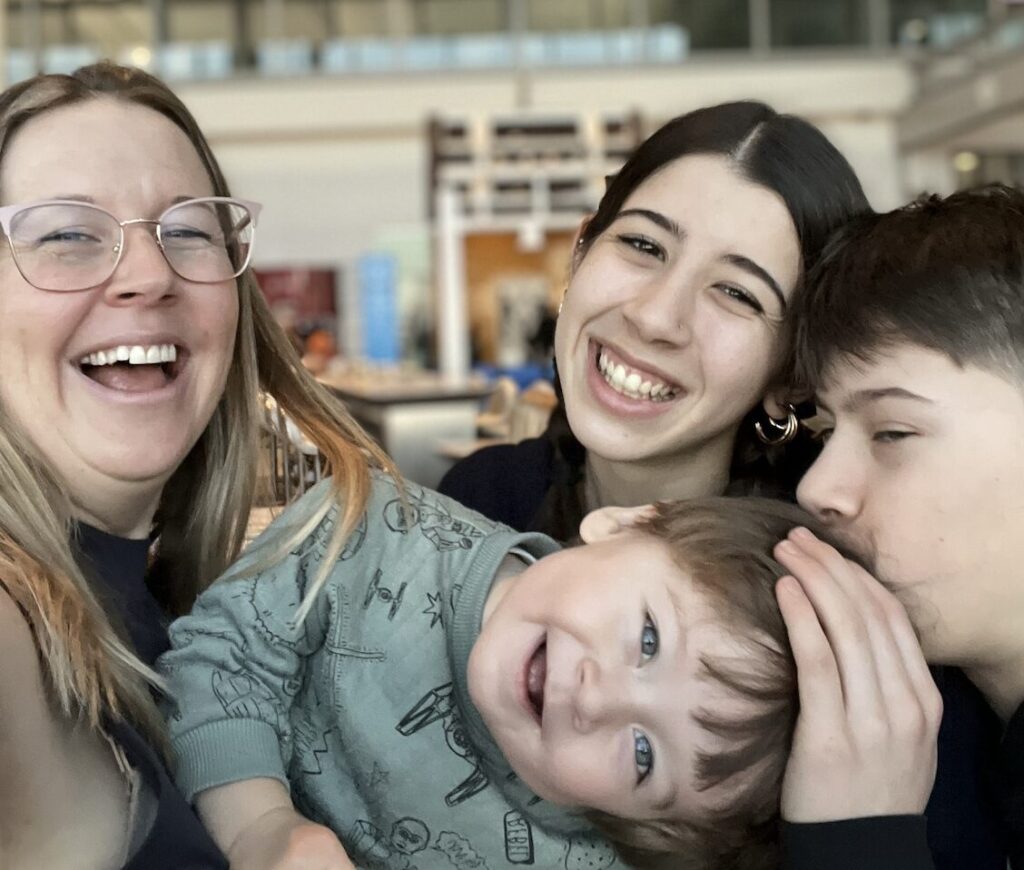When I close my eyes, my dream vacay looks like this: finally reading the book I’ve been meaning to get to for a year; a glass of sangria in my hand; my feet up and butt firmly planted on a lounge chair under swaying palms; watching the turquoise waters, listening to the waves. But that’s me—I prefer spending my very limited time away doing the bare minimum.
Of course, not all Canadians are on the same page when it comes to vacation plans. A recent study from travel ecommerce company Booking.com found that about half of the Canadians they surveyed believe travelling has taught them life skills. They also predicted that next year will see even more travellers hoping to learn something new while away from home.
This idea wasn’t lost on me when my husband, Peter, and I decided to take our girls away for a weekend last August. Peyton, 8, has been into animals since she could talk—she’s a huge fan of polar bears, pandas, dolphins and whales, especially, and aspires to be a zoologist or marine biologist when she grows up. With that in mind, and after a quick online search, I landed on Tadoussac—a village in Quebec where the St. Lawrence and Saguenay rivers meet. Apparently it’s one of the best places in the country for whale-watching. We could definitely do the 10-hour drive for the kids to see some of the biggest animals on the planet, and I’d feel good about them learning a thing or two.
“Giving kids the chance to explore their interests in a fun, meaningful way can give them the upper hand in improving education, future career skills and emotional maturity—things parents are always striving to give their kids,” says Angela Cavis, Booking.com’s senior manager of communications and public relations for North America. “Vacations to amusement parks and popular beach destinations are great for families with small kids or infants, but as soon as children get older and find their ‘niche,’ or have something they’ve become obsessed with, it makes perfect sense to start accommodating their budding interests and aspirations into travel plans.”
The girls were pumped about the opportunity to see whales in real life. After a night at Hotel Le Béluga, a quaint spot in the village, we boarded one of the large observation boats that cruises the St. Lawrence and settled in for a three-hour tour. Our guide offered interesting facts about the area, the river and its marine life—including the 13 whale species found in the St. Lawrence, how to identify what we see (humpbacks have a black back and long white pectoral fins) and what to look for (a plume of mist above the water may be a sign of a whale exhaling and surfacing). It wasn’t long before we caught our first glimpse of a humpback, and we spent the remainder of the cruise learning and watching whales surface and dive.
While researching on Booking.com, I had also discovered Tadoussac was home to a wild black-bear watching excursion, so I added that to our itinerary. (I couldn’t give Peyton polar bears, but hey, black bears would be equally exciting, right?) After a morning immersed in all-things whales, we arrived at Observation de l’Ours Noir a couple of hours before sunset. Before venturing into the small observation platform in the forest, our guide talked about the life of the area’s black bears—their food sources, hibernation and the refuge set up 12 years ago to help orphan cubs adapt to their natural habitat. There was absolutely no talking allowed during the two-hour observation (tip: make sure your kids are up for this before you book—our kids were glued to the action and were silent) so we asked our questions at the end. Seeing seven bears, including two cubs, doing their thing in the forest where they live was quite the experience. Both Peyton and Addyson, 10, observed their behaviour, named them and noted interesting things about them.
On the long drive home there was plenty of talk about what we’d seen. The trip was such a hit that the girls decided Tadoussac would be what they’d share when asked to talk about their favourite summer memory on the first day of school. The education didn’t stop there. When we got home, we dug into their animal books to read more about the whales and bears we saw. Peyton took it upon herself to research (voluntary homework!) on her iPad, and proceeded to write a full page about humpbacks and belugas— she’s never done this (not even when we got back from our first family vacation to see the Mouse a few years ago). Really it was a win-win for all of us. I didn’t get to lounge, smell the ocean air or start that memoir I’ve been waiting to read, but we all experienced something new, learned a lot and really had a ball. And yes, Peyton still wants to be a zoologist.
Easy edutrip research
You can spend hours googling what your kids are into and trying to find trips that fit the bill, especially if they have super-niche interests. We’re fans of the Destination Finder on Booking.com. “Parents and kids can use it to find locations around the world based on interests,” says Cavis. “Type in ‘nature’ and you’ll be given the best spots (rated by travellers) for budding environmentalists; ‘stargazing’ for places to take your little astronaut; ‘castles’ and you’ll find a destination your young historian could only dream of.” Our suggestion: Read guest reviews and look for “family-friendly” tags to find properties suitable for kids.
Originally published in the Winter 2019 issue.










